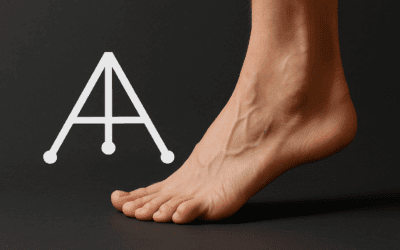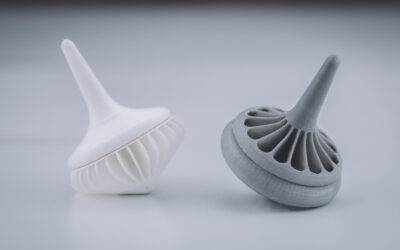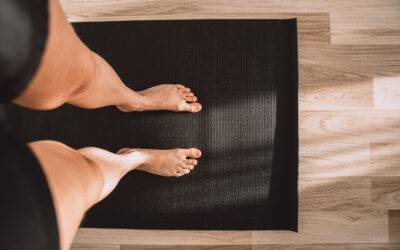Blogs
The Foot Tripod: Your Foundation for Movement Mastery
Imagine standing barefoot on a balance beam. Now close your eyes.
What’s keeping you upright isn’t just your muscles—it’s an ancient blueprint wired into your nervous system. And it all starts with your feet.
But not just any part of the foot—the tripod.
Stillness in Motion: How Your Body Controls Chaos
Imagine you’re wearing a Ruc Pack and you clip a water bottle to the front strap with a carabiner. Now walk. That bottle starts swinging side to side like a little wrecking ball. It tries to pull you off balance.
But when your body is organized the right way, the bottle barely moves. It’s not magic—it’s smart, controlled movement.
Week 12 and Series Capstone: Mastering Transverse Plane Swing Mechanics and the 12-Week Biomechanics Journey
Week 12 marks the final chapter of Fluid Health and Fitness’s Applied Fundamentals program—a 12-week structured progression through the biomechanical planes of motion. This concluding week examined the final components of the transverse plane in swing mechanics, specifically focusing on the scapulothoracic/glenohumeral complex, lumbopelvic sacroiliac (LPSI) region, and ankle-foot structures. More significantly, it served as a culmination of the cognitive and physical principles introduced throughout the series.
Transverse Plane Mastery: Week 11 Summary
Week 11 at Fluid Health and Fitness explored transverse plane swing-phase biomechanics—analyzing how the cervical-cranial, thoracic spine, and hip-knee complexes synchronize to support controlled rotation, postural alignment, and movement efficiency. This phase emphasized the dynamic stability required during swing, where the body must counter-rotate and reorient without sacrificing alignment.
Transverse Plane Mastery: Week 10 Guide to Stance Mechanics
Week 10 of the Applied Fundamentals course at Fluid Health and Fitness advanced the application of transverse plane biomechanics with a focus on the scapulothoracic/glenohumeral complex, lumbopelvic sacroiliac region, and the ankle-foot complex. This week continued the theme of rotational control in stance, reinforcing how each segment manages torsional forces while preserving joint integrity and kinetic efficiency.
Transverse Plane Mastery: Week 9 Guide to Stance Mechanics
Week 9 of the Applied Fundamentals course at Fluid Health and Fitness marked the transition into transverse plane mechanics—addressing how the body maintains postural control, joint alignment, and rotational integrity during stance. This phase explored how the cervical-cranial region, thoracic spine, and hip/knee complexes regulate and distribute rotational forces across the kinetic chain.
Mastering the Frontal Plane: Week 8 Summary of Biomechanics
Week 8 at Fluid Health and Fitness completed the study of frontal plane biomechanics by focusing on swing-phase mechanics across the scapulothoracic and glenohumeral (ST/GH) complex, the lumbopelvic sacroiliac (LPSI) region, and the ankle-foot complex. This phase emphasized dynamic postural control, neuromuscular integration, and joint alignment during unilateral movement.
Mastering the Frontal Plane: A Week 7 Guide to Swing Mechanics
Week 7 of the Applied Fundamentals course at Fluid Health and Fitness advanced our exploration of frontal plane mechanics into the swing phase. This week examined how the cervical spine, thoracic spine, and lower extremities coordinate during lateral limb advancement to preserve balance, visual orientation, and postural control.
Mastering the Frontal Plane: A Week 6 Guide to Stance Mechanics
Week 6 of the Applied Fundamentals course at Fluid Health and Fitness deepened the exploration of frontal plane mechanics, focusing on the shoulders, core, and feet—the endpoints and central hub of the kinetic chain. This week emphasized how the scapulothoracic, glenohumeral, lumbopelvic, and ankle-foot complexes coordinate to maintain load balance, postural symmetry, and dynamic control in the frontal plane
Mastering the Frontal Plane: A Week 5 Guide to Stance Mechanics
Week 5 of the Applied Fundamentals course at Fluid Health and Fitness marked the transition into frontal plane biomechanics, examining side-to-side control and balance during stance. This week focused on the cervical and cranial regions, the thoracic spine, and the femoroacetabular (hip) and femorotibial (knee) joints—each playing a pivotal role in maintaining symmetry, alignment, and dynamic stability under load.












